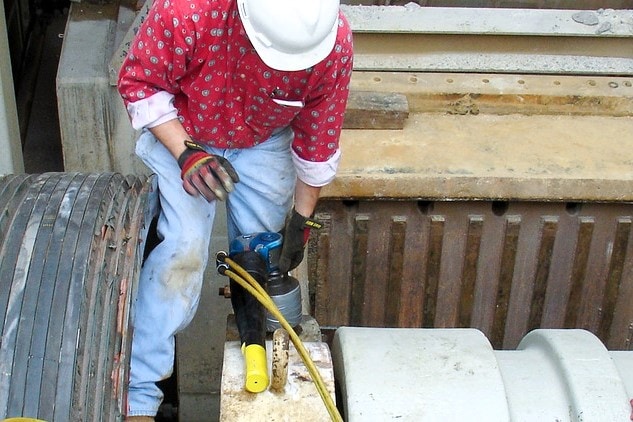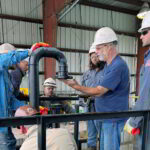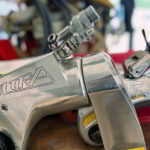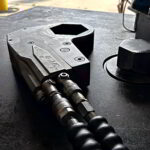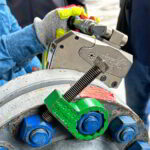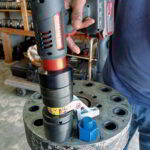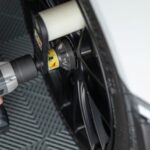Electric torque wrenches are essential tools in many industries, including manufacturing, construction, and automotive repair. These devices provide precise torque control and are fundamental for ensuring that bolted joints are properly tightened. This article discusses safety tips for operating electric torque wrenches effectively and safely, sharing insights on how to minimize risks while maximizing productivity.
Understanding Electric Torque Wrenches
An electric torque wrench is more than just a tool; it’s a critical component that demands respect and understanding. For instance, workers in the aerospace industry rely on these wrenches to achieve the exact tightness required to ensure aircraft safety. The wrench’s precision can prevent over-tightening, which might lead to part damage or under-tightening that could result in a joint failing during critical operations. Learning to operate these tools correctly involves understanding their mechanisms and the appropriate application in various situations.
- Research the specific model’s capabilities and limitations.
- Always check the torque settings before use.
- Ensure the wrench is compatible with the task at hand.
Pre-Operational Safety Checklist
Before starting a project, performing a thorough safety check of your electric torque wrench can prevent many potential issues. This involves inspecting the tool for any signs of wear or damage, checking all settings, and confirming that it is properly calibrated according to the manufacturer’s specifications. Such precautions, though time-consuming, are necessary to ensure safety and tool longevity.
- Inspect the power cord and battery for damage.
- Test the wrench on a small, non-critical joint.
- Verify the calibration date and recalibrate if necessary.
Proper Handling Techniques
Handling an electric torque wrench correctly can significantly reduce the risk of workplace injuries. Workers should maintain a firm, balanced stance while using the tool to avoid strain from awkward positions. When working with heavy industrial equipment, one slip can lead to serious injuries; therefore, ensuring that all users are adequately trained on proper handling techniques is crucial.
- Always use both hands to maintain control.
- Do not overreach; keep the wrench close to your body.
- Regularly switch hands to avoid fatigue.
Protective Gear and Safety Equipment
Using the correct personal protective equipment (PPE) is essential when operating any type of machinery, including electric torque wrenches. Eye protection can prevent flying debris from causing eye injuries, and gloves can protect against burns from hot equipment and abrasions.
- Wear safety goggles or face shields.
- Use gloves suitable for the type of machinery.
- Wear steel-toed boots to protect feet.
Operating Electric Torque Wrenches Safely
When you start the actual operation of an electric torque wrench, it’s important to adhere to specific procedures to maintain safety. This includes setting the torque correctly according to the manufacturer’s guidelines and always being aware of the surrounding environment. Unexpected torque spikes or tool malfunctions can occur, so staying alert helps mitigate potential dangers.
- Always double-check the torque setting before starting.
- Be aware of your surroundings, especially in tight spaces.
- Never bypass the safety features built into the tool.
Emergency Procedures and Troubleshooting
Knowing how to respond to emergencies and troubleshoot common issues with electric torque wrenches can make a significant difference in safety management. If a wrench becomes jammed or stops functioning, knowing the immediate steps to safely rectify the situation is vital. Always refer to the manufacturer’s manual for specific troubleshooting guidance.
- Disconnect the power immediately if a malfunction occurs.
- Consult the troubleshooting section of the owner’s manual.
- Keep emergency contact numbers handy.
Maintenance and Storage Tips
Maintaining and storing electric torque wrenches properly extends their lifespan and ensures they are safe to use each time they are needed. Regular maintenance checks, including battery care and the inspection of electrical components, are crucial. Storing tools in a clean, dry environment prevents rust and other damage that could compromise safety.
- Regularly clean and inspect the tool after use.
- Store in a dry, temperature-controlled environment.
- Follow the manufacturer’s guidelines for battery care and storage.
Training and Certification Requirements
Ensuring that all personnel operating electric torque wrenches are adequately trained and, if required, certified, is not just a matter of compliance but also of safety. Many industries mandate specific training programs for the use of such equipment to reduce the risk of accidents and improve overall workplace safety.
- Enroll in accredited training programs.
- Stay updated with continuous learning and certifications.
- Verify workers’ certifications regularly.
Key Takeaways for Operating Electric Torque Wrenches Safely
After discussing the comprehensive safety measures and best practices for operating electric torque wrenches, several key takeaways emerge:
- Proper preparation and understanding of the tool are critical.
- The use of appropriate protective gear cannot be overstated.
- Regular maintenance and proper handling ensure operational safety and tool longevity.
Electric Torque Wrench Safety FAQs
- What is the most common mistake made when using electric torque wrenches?
- Over-tightening due to incorrect torque settings is a frequent error, highlighting the importance of double-checking settings before use.
- Can I use any gloves with electric torque wrenches?
- It’s best to use gloves that provide both flexibility and protection, such as mechanics gloves, which are designed to handle machinery.
- How often should I recalibrate my electric torque wrench?
- Manufacturers typically recommend recalibration after 5,000 cycles or one year, whichever comes first, but always check the specific guidelines for your tool.
- What should I do if the electric torque wrench gets wet?
- Disconnect the power source immediately and dry the tool. Do not use the wrench until it has been checked by a qualified technician.
- Is there a recommended way to store electric torque wrenches when not in use?
- Store in a clean, dry environment, ideally in a case or cabinet designed to protect tools from dust and moisture.
This article offers a thorough overview for industries utilizing electric torque wrenches, emphasizing the importance of safety and proper use to avoid accidents and ensure efficiency.

